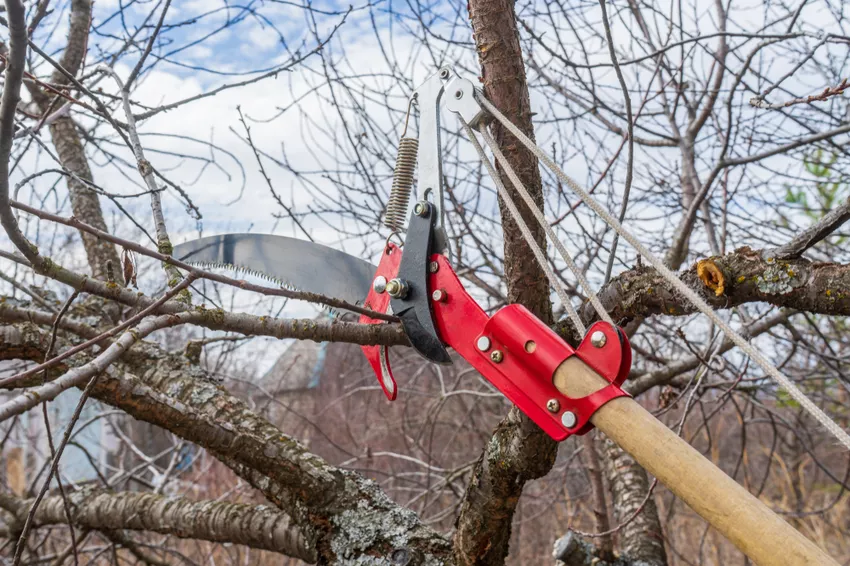Wild cherries produce small black fruits that are particularly popular with birds. Some gardeners love the slightly tart taste of these wild fruits. But such a tree can quickly lead to space problems if it is not kept in check.
 Cherry trees should be pruned in February/March
Cherry trees should be pruned in February/March
When is the right time?
In principle, wild cherries can be pruned both before they sprout and after the cherry harvest. During both appointments, you should be careful not to remove too many branches. It is sufficient if you subject these native trees with a wild character to a cut once a year.
spring cut
Cherry trees can be pruned from February to March without any problems. It is important that the pruning is not carried out too intensively. In the case of intensive interventions, fruit trees tend to produce excessive resin, which you can prevent with a normal intensity of pruning.
summer cut
From August, pruning is no longer recommended, as the tree is storing energy for the winter at this time. Since wild cherries bloom in the spring and the fruit ripens during the summer, the pruning can take place relatively early immediately after the harvest. Sufficient leaves should remain on the tree so that it can adequately compensate for the loss of leaves.
Disadvantage:
- In summer, pathogens are more active, so cuts rob additional strength
- cutting too late impairs the storage of reserve substances
- can be fatal for old and weakened wild cherries
growth
Wild cherries grow faster than ornamental cherries. They develop a wide and conical crown with numerous strong branches, on which numerous short shoots develop. Umbellated inflorescences bloom on these between April and May, appearing at the same time as the leaves. The long shoots have a terminal bud.
cutting measures
Usually, wild cherries do not require pruning. Since they grow very quickly and reach heights of up to 20 meters without maintenance interventions, regular interventions are recommended. These must be done with caution. Although the wood proves to be well tolerated by pruning and also proliferates when the main shoot has been removed. However, the wild species usually no longer sprout from old wood, since there are no dormant buds here.
ground rules
Cut wild cherries regularly after planting so that they grow to a manageable size. In addition to the main shoot, select four leading branches for the crown structure. Old specimens that have developed a spreading crown should only be shortened to a limited extent. Always cut back to existing leaf buds. If you remove branches completely, cut them off at the branch ring.
tips
Wild cherries are the perfect base for refining cultivated forms. If you want to preserve parts of the wild species, you need to cut this area more.
bonsai
Cherries start flowering on the previous year's shoots, which is why you should only cut the artificial trees after they have blossomed. Subsequent branches remain until the following year. When repotting, the roots are shortened so that there is a balanced relationship between root system and crown.